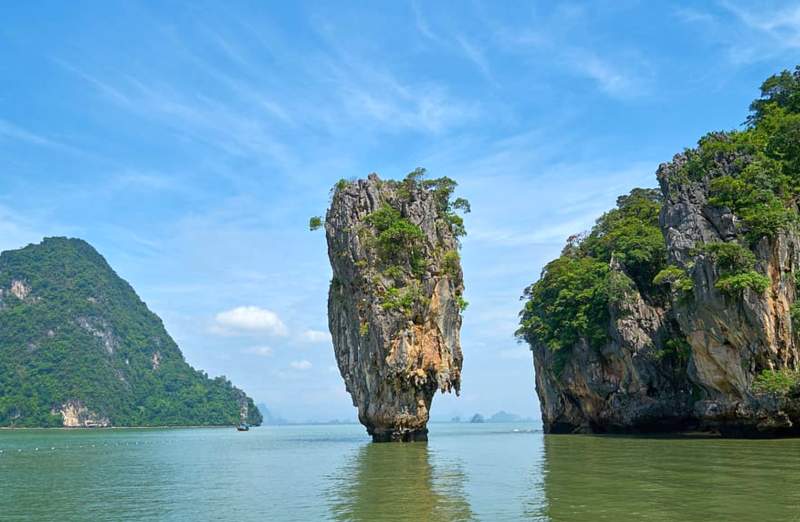Superior Lake, in terms of surface area, is the largest freshwater lake in the world and the third-largest freshwater lake by volume in North America. It is situated on the border between the United States and Canada. It is considered the Great Lakes of North America, which are bounded by Ontario and Minnesota to the north and west and Wisconsin and Michigan to the south. The frozen Lake Superior hasn’t completely frozen over in two decades, and it is predicted that the lake will soon be totally covered with ice, especially during a record-breaking cold winter.
The beautiful Lake Superior empties into Lake Huron via the St. Marys River and the Soo Locks. Lake Superior’s shoreline stretches to 4387 kilometers, including islands. Lake Superior ice thickness varies immensely, from a very thin sheet in specific areas near the coast to several feet thick in other spots.
On the shoreline of Ontario, you can find the world’s oldest rocks, about 2.7 billion years old. On July 30, 1985, an American limnologist, J. Val Klump, was the first person to reach the lowest depth of Lake Superior. The temperature of Lake Superior’s surface varies seasonally, which makes the lakes seasonally stratigraphic.
The lovely migrating birds of prey funnel down Lake Superior’s north shore in countless numbers each fall; it is estimated that on a single day at Duluth’s Hawk Ridge, as many as 100,000 birds of prey might pass by. Lake Superior normally warms up in June and starts to be cold at the end of August. At that time, tourists can enjoy the beauty of this wonderful lake.
The record-breaking ice on the lake and the extraordinarily cold winter recently experienced an all-time record of 23 straight days of below-zero temperatures. Lake Superior’s water level fluctuates from month to month, with the highest lake levels in October and November and the lowest levels in March and April. It is believed that the first people came to the Lake Superior region 10,000 years ago after the retreat of the glaciers in the last Ice Age.
Lake Superior has had an important connection with the Great Lakes Waterway, offering a transportation route for several commodities such as iron, grain, and other mined and manufactured materials. A large vessel transports these commodities across Lake Superior. More than 80 different species of fish have been found in Lake Superior, like Brook trout, round whitefish, walleye, Banded killifish, Yellow perch, Cisco, Burbot, Pumpkinseed, etc. In the summer season, the sun sets more than 35 minutes later on the western shore of Lake Superior than at its southeastern edge.
Compared with the other lakes in the group, it has a higher elevation, deeper and colder water, and a shorter navigation season. Its altitude of 602.23 ft. above sea level exceeds that of lakes Huron and Michigan by 21.29 feet, and its maximum depth of 1,290 ft. is over 600 ft. below sea level. The mean depth is 475 feet. The lake’s coastline measures 1,500 miles and is indented by two large bays, Whitefish and Keweenaw.
Lake Superior was discovered in 1616 by Etienne Brule, an adventurous Frenchman seeking the source of copper from which Indians made arrowheads. In 1854, the opening of the Sault Ste. Marie Canal marked the beginning of its commercial importance. The navigation season opens on the 20th of April with the breaking up of the ice. It ends in December, when terrific storms and intense colds make shipping impossible.
The Apostle Islands lie off Wisconsin, and the picturesque Isle Royale, a popular summer resort, is situated off Ontario. It has a drainage basin of 80,900 square meters, including 37,570 square miles of United States territory. There are no large rivers emptying into the lake. However, there are numerous small streams, principally the St. Louis River, with its mouth at Duluth. Lake Superior empties into Lake Huron through the St. Mary’s River, a stream about 63 mi. long, obstructed by a mile-long section of steep rapids. The canals built on both the American and Canadian sides of these rapids constitute the greatest artificial waterway in the world in terms of commercial traffic handling.
In 1929, the cargoes passing through them aggregated 92,622,017 tons for a navigation season of eight months. The Suez Canal, next in commercial importance and navigable throughout the year, carried 33,466,014 tons. Lake Superior harbors are Agate Bay, Minn.; Ashland, Wis.; and Port Arthur, Ont. Duluth, Minn., which is one of the most significant ports on the Great Lakes because of its facilities and commerce. The total amount of freight cleared through it in 1929 was 60,385,767 tons valued at $485,631,945, of which 45,014,332 tons were ores and metals, 11,729,781 tons were nonmetallic minerals, and 3,282,862 tons were food products, chiefly wheat.
Read More: A Place Where the Namib Desert Meets the Ocean









